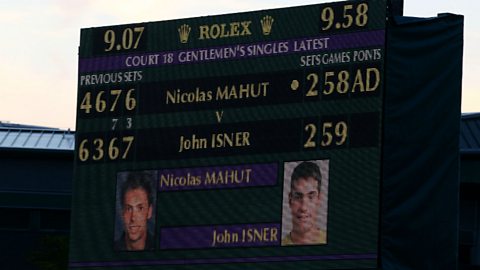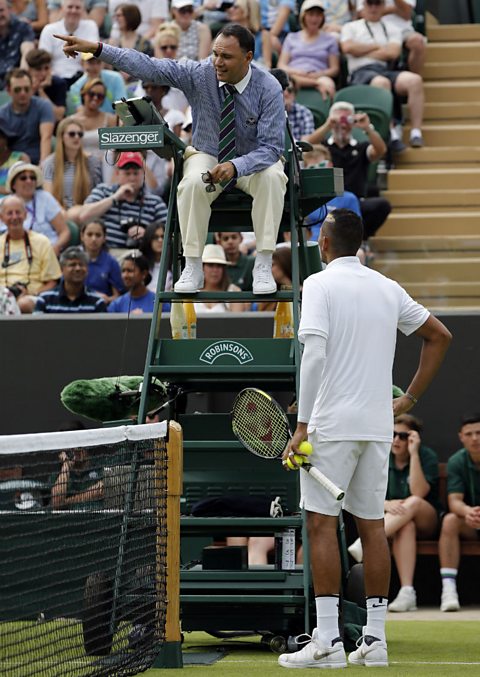Tennis scoring, rules and officials
Scoring
To begin a tennis match, a coin must be tossed, usually by the umpire. The winner then decides who serves first and at which end they would prefer to start the game.
At the beginning of a game both players begin with âloveâ (zero) points. Unlike other racket sports, the points do not increase in standard increments, instead they follow the set system below:
- No points â 'Love'
- First point â '15'
- Second point â '30'
- Third point â '40'
- Fourth point â 'Game'
Therefore, the first player to win four points wins the game.
To win a game, a player must beat their opponent by two clear points. However, it is very common for both players to reach 40-40 (40-all) - this is called "deuce".
At deuce, a player is still required to win by two more points. Therefore, if the server wins the next point the score is âadvantage serverâ. If the player with "advantage" wins the next point they win the game, but if the player without "advantage" wins the next point, the score reverts to "deuce". There is no limit to the number of times a game can go to deuce and, as a result, a game can go on for an extended period of time.
A tennis match is played up to five sets for men and three sets for women in a 'Grand Slam' event. The Grand Slam events are considered the most prestigious annual tennis events and offer the most ranking points, prize money, public and media attention, and hence the biggest field of competitors. In all other competitive matches, both men and women play to three sets.
The first player to win six games will be awarded a set, but if both players have five games each, a set can be extended to seven games. If players are tied at six games each (or six games-all), then the set goes into a tie-break system. In most matches, if a game is tied 6-6 all in the final set then a player must win by two clear games.

Rules
- A match must start with a coin toss to decide who serves first and which side they want to serve from.
- After each point, the server will alternate either side on the baseline.
- The server must hit their serve from behind their baseline.
- If the first serve is called out, then the server may take advantage of a second serve. If the second serve fails then a 'double fault' is called and the point is lost.
- If the serve hits the net but travels over and into the service area, then a 'let' is called and the server may take the serve again without penalty.
- To receive a serve, the player is allowed to stand where they wish but they must allow the ball to bounce once first.
- If a player touches the net, distracts their opponent or impedes them in any way, the umpire will award the point to the other player.
- Throughout a game, the ball is allowed to hit the lines to be awarded in. Anything outside of the lines and the ball is out.
- In competitive games, new tennis balls are introduced after the first seven games and then every nine games after that.
Officials
Chair umpire

To ensure the rules of a tennis match are upheld correctly, a chair umpire is appointed in competitive matches to maintain the spirit of fair play. This umpire sits in an elevated chair by the net and announces the score. Like most sports, the chair umpire has the final word on all issues that happen during play. This could be:
- whether a ball is "in" or "out"
- if a player has a foot fault
- a service touches the net, etc.
In all matches where line umpires are present, a chair umpire is able to have an "overrule" decision that can be made if they feel that a mistake has been made.
Line umpire
Line umpires work on court as part of a team of between one and nine line umpires. The line umpire calls all shots relating to their assigned line. Each line umpire is assigned to one line or a position in a system if the crew is short-handed. For example, a line umpire on the receiver's side may have to cover the centre service line, and then move to one of the sidelines after the serve. Line umpires are a requirement for professional tennis games.